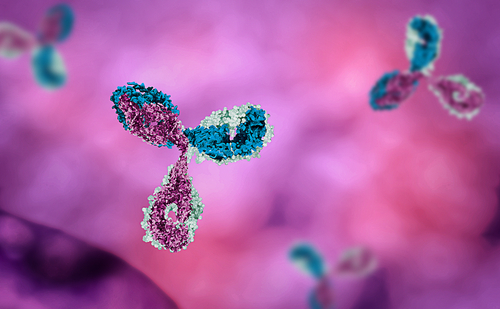Monitoring Autoantibodies in AAV Helps Predict Remission, Relapse, Study Finds
Written by |

Changes in autoantibodies that target the protein PR3 in people with ANCA-associated vasculitis (AAV) may help predict sustained remission following treatment, and eventual disease relapses, a study found.
The research also shows that the ALBIA method, which is becoming widely used in high-volume laboratories for the measurement of these antibodies, is feasible for serial monitoring of autoantibody levels.
The study, “Clinical Utility of Serial Measurements of Antineutrophil Cytoplasmic Antibodies Targeting Proteinase 3 in ANCA-Associated Vasculitis,” was published in the journal Frontiers in Immunology.
Anti-neutrophil cytoplasm antibodies (ANCA) are autoantibodies that target a type of white blood cell called neutrophils, which are important for fighting infections. This leads to the release of toxic substances causing damage to small blood vessel walls and swelling in affected tissues and organs.
These ANCA antibodies mainly target two proteins within neutrophils: proteinase 3 (PR3) and myeloperoxidase (MPO).
Testing for the presence of ANCA, along with clinical assessments and other blood tests for inflammatory markers, kidney function, and urine measurements for blood and protein, supports an AAV diagnosis.
However, the utility of ANCA testing alone as an indicator of disease activity or as a predictor of relapse has been inconsistent, with some patients experiencing relapse when they are ANCA negative or others without a significant rise in ANCA.
Studies have suggested that ANCA testing limitations are due to testing methods, disease characteristics, and the treatment regimen.
Now, researchers based at the Mayo Clinic and the Mayo Foundation for Research and Education aimed to find an association between changes in ANCA levels and remission or relapse by various testing methods.
Serum samples and clinical data were collected from participants in the RAVE Phase 2/3 trial (NCT00104299), which was designed to evaluate the effectiveness of rituximab compared with standard therapy cyclophosphamide in people with granulomatosis with polyangiitis and microscopic polyangiitis. Data from the trial supported rituximab’s approval — marketed as Rituxan, Truxima, and Ruxience — for these two AAV subtypes.
As patients with anti-PR3 autoantibodies are at increased risk of relapse compared with MPO-positive patients, the team focused on those from RAVE who carried anti-PR3 autoantibodies.
ANCA testing was performed using standardized direct enzyme-linked immunosorbent assays (ELISAs). If ANCA was found positive, serial samples were measured using different ELISA approaches (direct and capture), and an automated addressable laser-bead immunoassay (ALBIA). Since ALBIA can only accurately measure ANCA levels if they’re below 8 units, samples were additionally diluted (titrated), and the highest value among the titrations was recorded.
A total of 131 PR3 positive participants from the RAVE trial were included. Among them, 108 achieved complete remission during follow-up, and 92 had a sustained remission.
As measured by direct ELISA, there was a decrease in anti-PR3 antibodies at two months in 93 (71%) of patients. A decrease in 50 participants (38%) was determined by capture ELISA, and in 120 (92%) by ALBIA.
Results showed that a decrease in PR3-ANCA by ALBIA at two months, and a decrease in PR3-ANCA by direct ELISA at four months, were both associated with significantly shorter times to sustained remission.
While participants with a decrease in ALBIA-measured PR3-ANCA at two months achieved sustained remission after a median of 12 months, only two patients without such decreases in ANCA levels achieved sustained remission during follow-up.
When autoantibodies were measured by direct ELISA at four months, sustained remission was achieved after a median of nine months among patients with a decrease in PR3-ANCA, compared with 12 months among those without a drop in anti-PR3 antibodies.
The researchers also examined whether testing negative for PR3-ANCA at four months using any method was linked with remission times, but no significant association was identified.
The associations with remission, however, did not hold true when patients were divided according to their assigned treatment. In this analysis, only decreases in PR3-ANCA by ALBIA at two and four months were associated with reduced time to sustained remission, and only in the subgroup receiving cyclophosphamide.
While reductions in autoantibody levels predicted remission, the team also found that rising PR3-ANCA levels measured by ALBIA could similarly predict relapse. Of the 55 patients who relapsed after achieving complete remission, most (85%) did so at the same time, or shortly after, a rise in PR3-ANCA levels.
A significant association between an increase in PR3-ANCA levels determined by ALBIA and the risk of severe relapse also was observed both in the overall population, and in subgroups with kidney involvement, small blood vessel inflammation, lung bleeding, and those treated with rituximab.
“Measurement of PR3-ANCA by ALBIA at two months may help clinicians identify those patients who will not respond to the current therapy,” the researchers concluded. “Clinicians should consider changing to an alternative therapy or close monitoring of patients without a decrease in PR3-ANCA.”
“It is important to note without titration, 14% of the increases detected by ALBIA would have been missed,” they added. “Consequently, titration is recommended when this assay is used for disease monitoring in AAV.”




